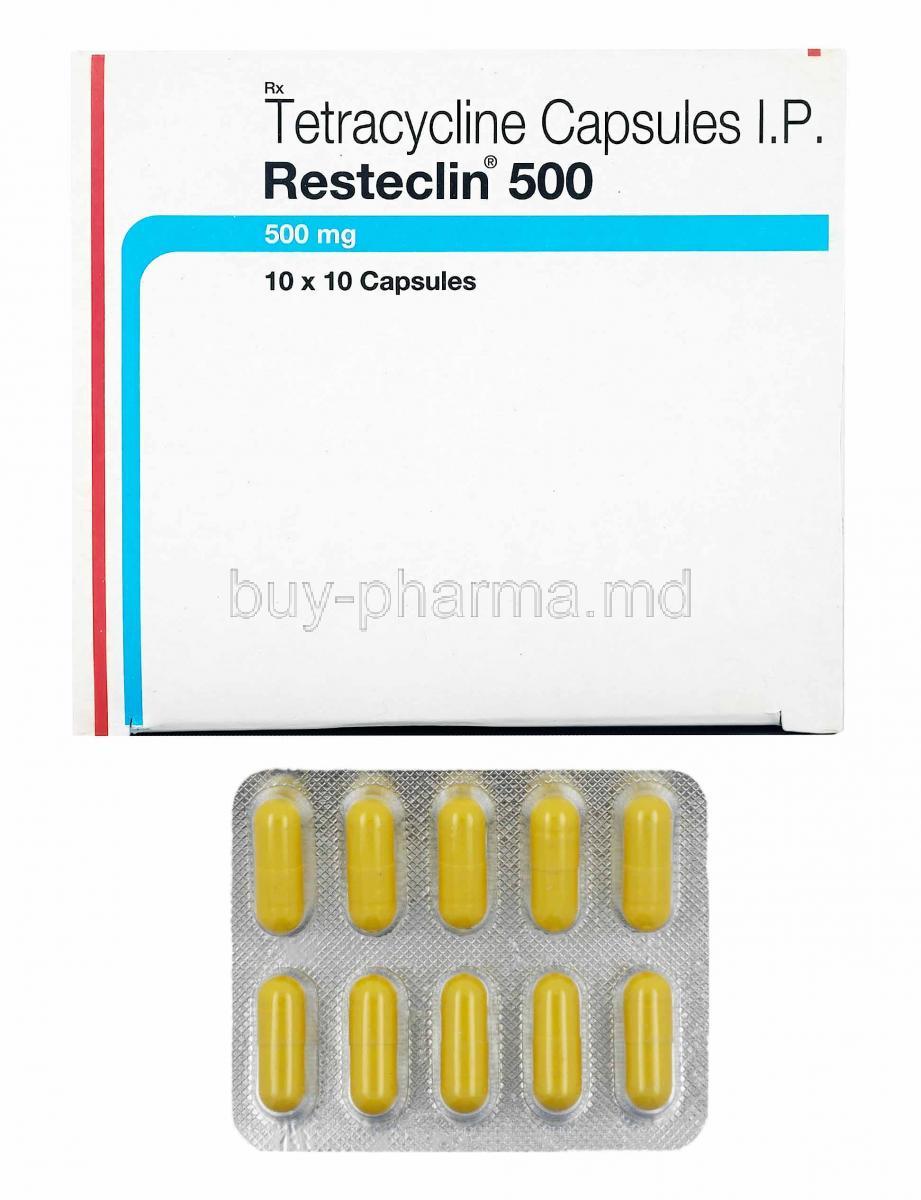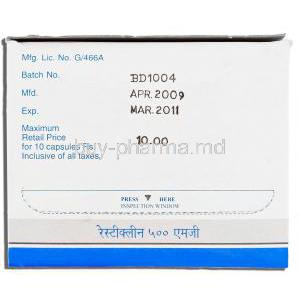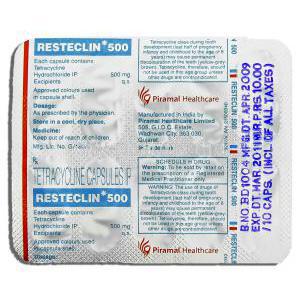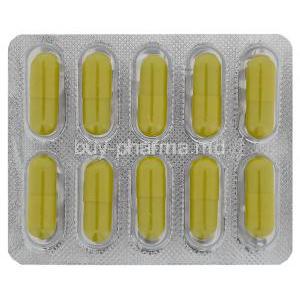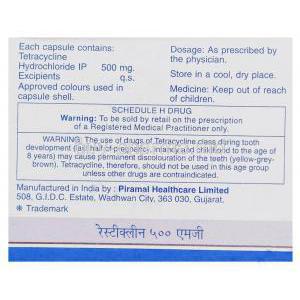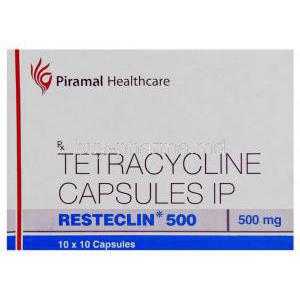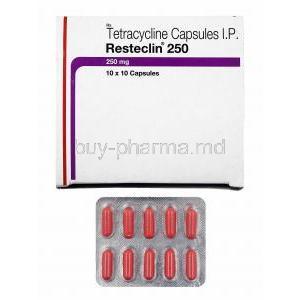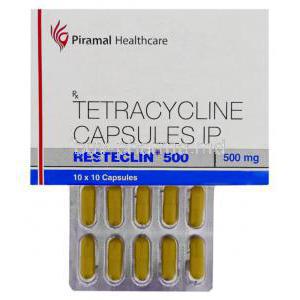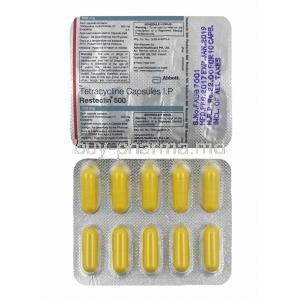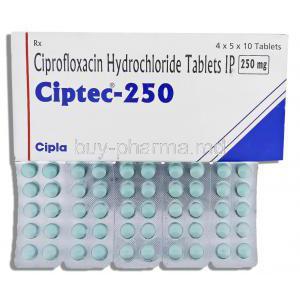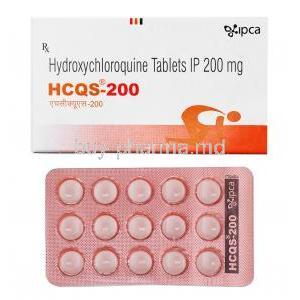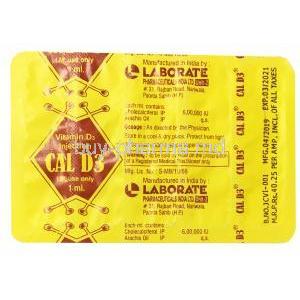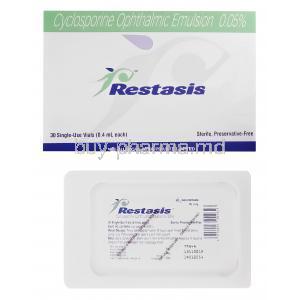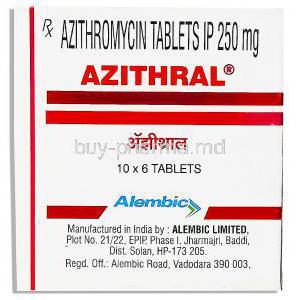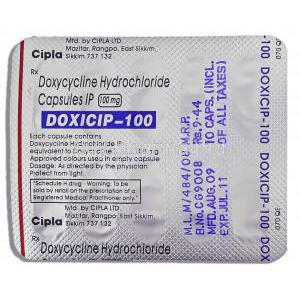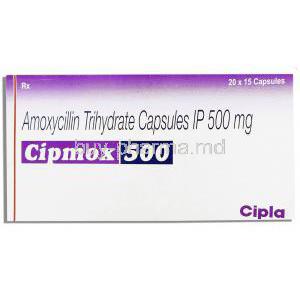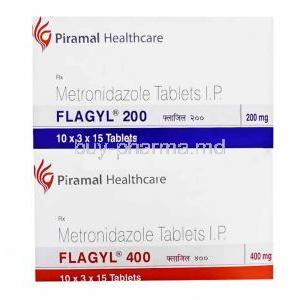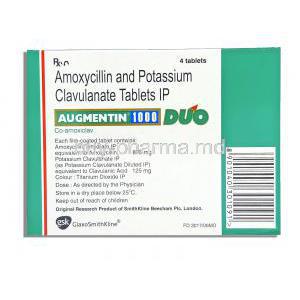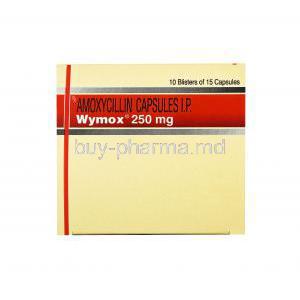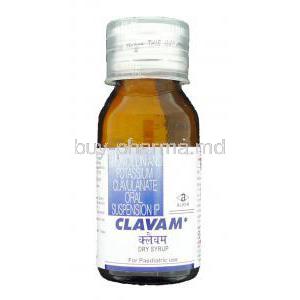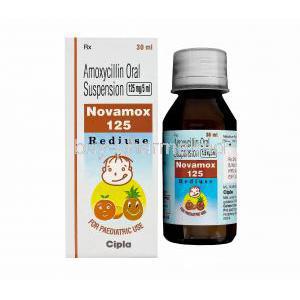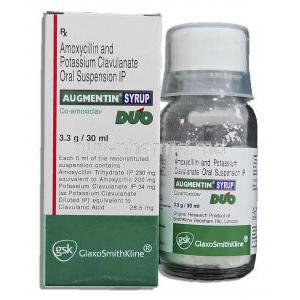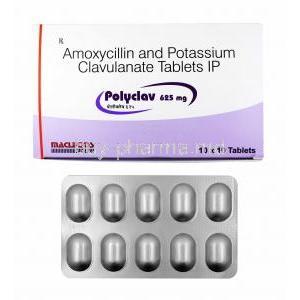Introduction to Resteclin (Tetracycline)
Overview of tetracycline antibiotics
Tetracyclines belong to a class of broad-spectrum antibiotics that have been indispensable in modern medicine for decades. These compounds, derived initially from soil-dwelling Streptomyces bacteria, exert their power against a wide range of pathogens. Their ability to treat diverse infections has made them a cornerstone of antimicrobial therapy.
Historical background and medical relevance
Discovered in the 1940s, tetracyclines transformed the management of infectious diseases at a time when resistance to older antibiotics was on the rise. Over the years, they became essential tools in combating both common and rare bacterial conditions. Their enduring relevance lies in their versatility and established clinical record.
Brand name Resteclin and its global availability
Resteclin is the trade name for tetracycline hydrochloride, a formulation widely distributed in many parts of the world. It is commonly prescribed in regions where bacterial infections remain prevalent and cost-effective antibiotics are required. Its reputation for reliability ensures continued global demand.
Importance in treating bacterial infections
Bacterial infections affect millions worldwide each year. Resteclin plays a pivotal role by suppressing the growth of harmful microbes, thus alleviating symptoms and preventing complications. Its clinical use spans respiratory, gastrointestinal, dermatological, and systemic infections.
Composition and Formulations
Active ingredient: Tetracycline hydrochloride
The primary therapeutic component of Resteclin is tetracycline hydrochloride, a salt form that enhances absorption and stability. This active compound ensures effective antimicrobial action within the body.
Available dosage forms: capsules, tablets, oral suspension
Resteclin is manufactured in multiple dosage forms to meet varying clinical needs:
- Capsules for convenient oral administration
- Tablets for precise dosing
- Oral suspension for pediatric and geriatric patients with swallowing difficulties
Inactive ingredients and excipients
In addition to the active drug, each formulation includes stabilizers, fillers, and binding agents. These excipients ensure consistent potency, proper dissolution, and patient acceptability.
Strengths and packaging variations
Resteclin is available in multiple strengths, commonly 250 mg and 500 mg capsules, packaged in blister strips or bottles. This variety allows physicians to tailor therapy according to infection severity and patient profile.
How Resteclin (Tetracycline) Works
Mechanism of action: inhibition of bacterial protein synthesis
Resteclin acts by binding to the 30S subunit of bacterial ribosomes, thereby obstructing the attachment of aminoacyl-tRNA. This halts the elongation of protein chains, leading to suppression of bacterial growth.
Bacteriostatic vs. bactericidal effects
Tetracycline exerts a bacteriostatic effect, meaning it inhibits bacterial proliferation rather than killing organisms outright. By arresting growth, the immune system is given the opportunity to eradicate the infection naturally.
Spectrum of activity against Gram-positive and Gram-negative bacteria
The drug is active against a wide array of pathogens:
- Gram-positive organisms such as Streptococcus and Staphylococcus
- Gram-negative bacteria including Escherichia coli and Neisseria species
- Atypical organisms like Mycoplasma and Chlamydia
Resistance mechanisms and clinical implications
Bacterial resistance can develop through efflux pumps, ribosomal protection proteins, or enzymatic inactivation. Clinicians must consider local resistance patterns when prescribing tetracyclines to ensure optimal therapeutic outcomes.
Approved Medical Uses
Treatment of respiratory tract infections
Resteclin is commonly indicated for bronchitis, pneumonia, and other respiratory conditions caused by susceptible pathogens. Its ability to penetrate lung tissue ensures effective results.
Management of urinary tract infections
Uncomplicated and recurrent urinary tract infections can be addressed with tetracycline, offering relief from painful symptoms while eliminating causative bacteria.
Skin and soft tissue infections including acne vulgaris
Dermatologists frequently prescribe Resteclin for moderate to severe acne due to its anti-inflammatory and antibacterial activity. It also proves useful in treating infected wounds and cellulitis.
Gastrointestinal infections including cholera
In cases of cholera and other enteric infections, tetracycline reduces bacterial load and minimizes fluid loss, potentially saving lives in epidemic settings.
Sexually transmitted infections: chlamydia, syphilis, gonorrhea
Tetracycline remains a valuable treatment option for several sexually transmitted diseases, particularly in patients intolerant to alternative regimens.
Rickettsial infections: Rocky Mountain spotted fever, typhus
Infections caused by Rickettsia organisms respond well to tetracycline therapy, making Resteclin an indispensable choice for these potentially life-threatening diseases.
Anthrax treatment and prophylaxis
Resteclin is recognized as part of the arsenal against Bacillus anthracis, both for therapeutic purposes and as a preventive measure after suspected exposure.
Off-Label Uses of Resteclin
Malaria prophylaxis and treatment
Although not a first-line drug, tetracycline is sometimes used in malaria prophylaxis and combination regimens, especially in resistant cases.
Periodontal disease and gum infections
Dental practitioners may prescribe tetracyclines to manage gum inflammation and bacterial overgrowth in periodontal disease.
Rosacea management
Low-dose tetracycline is often effective in controlling the inflammatory lesions and erythema associated with rosacea.
Rheumatoid arthritis adjunct therapy
Tetracyclines exhibit immunomodulatory effects, making them useful adjuncts in certain autoimmune conditions like rheumatoid arthritis.
Helicobacter pylori eradication protocols
In some multi-drug regimens, tetracycline is included to assist in eliminating H. pylori, a bacterium linked to gastric ulcers and cancer.
Veterinary applications
Resteclin also finds use in veterinary medicine, where it treats infections in livestock and pets, underscoring its broad applicability.
Dosage and Administration Guidelines
Standard adult dosing instructions
Typical adult doses range from 250 mg to 500 mg every six hours, depending on the type and severity of the infection. Physicians adjust dosing to ensure maximum therapeutic effect with minimal risk.
Pediatric dosing recommendations
For children over the age of eight, dosing is generally weight-based, ensuring adequate exposure without exceeding safety thresholds. Children under eight are typically excluded due to risks of tooth discoloration.
Duration of therapy for various infections
Treatment courses vary widely, from 7–14 days for respiratory infections to several weeks for dermatological conditions like acne. Prolonged use requires careful monitoring.
Instructions on timing relative to meals and dairy products
Resteclin should be taken on an empty stomach with a full glass of water. Dairy products, antacids, and iron supplements should be avoided within two hours of dosing, as they can interfere with absorption.
Missed dose guidance and discontinuation advice
If a dose is missed, it should be taken as soon as remembered, unless it is nearly time for the next dose. Patients should never double doses. Premature discontinuation should be avoided, as it may lead to incomplete eradication and resistance.
Administration in Special Populations
Elderly Patients
Elderly individuals often require tailored therapy due to age-related physiological changes. Adjustments may be necessary when renal or hepatic function is compromised, as impaired clearance can heighten the risk of toxicity. Physicians should assess organ function prior to initiating treatment.
Older adults are also more vulnerable to adverse drug effects. Monitoring should include regular evaluation of gastrointestinal tolerance, liver enzyme levels, and potential neurological changes. Close supervision ensures safety while maintaining therapeutic efficacy.
Pregnant Women and Nursing Mothers
Use of tetracycline during pregnancy poses significant hazards. Risks include permanent tooth discoloration in the fetus and interference with normal bone growth. For this reason, tetracycline is contraindicated in pregnancy unless no safer alternatives exist.
The compound crosses into breast milk, raising concerns for neonatal exposure. Infants may face enamel hypoplasia or inhibited skeletal development. Medical guidance strongly advises against use in breastfeeding mothers to safeguard infant health.
Children
In pediatric patients, safety is a primary concern. Resteclin should not be administered to children under eight years of age due to the risk of irreversible dental discoloration and potential growth disturbances. These side effects can manifest even with short-term therapy.
For older children, dosing must be carefully calculated based on weight and overall health profile. Physicians should balance therapeutic need against long-term developmental considerations.
Side Effects of Resteclin
Common Side Effects
Adverse reactions, while often mild, can affect patient comfort and adherence. Commonly reported effects include:
- Gastrointestinal upset such as nausea, vomiting, and diarrhea
- Photosensitivity reactions with heightened skin sensitivity to sunlight
- Occasional dizziness or mild headache
- Tooth discoloration in pediatric patients
Serious Adverse Reactions
Though less frequent, severe reactions require immediate medical intervention. These include:
- Hepatotoxicity with abnormal liver enzyme elevations
- Severe allergic responses including anaphylaxis
- Intracranial hypertension with persistent headaches and vision changes
- Superinfections such as oral or vaginal candidiasis
Drug Interactions
Resteclin’s efficacy and safety can be influenced by co-administered substances:
- Antacids, calcium, iron, and dairy products can reduce absorption
- Anticoagulants may have enhanced effects, necessitating dose adjustment
- Oral contraceptives may lose efficacy when combined with tetracyclines
- Concurrent use with retinoids increases the risk of intracranial hypertension
- Enzyme-inducing drugs may lower tetracycline levels, reducing effectiveness
Warnings and Precautions
To maximize benefits and reduce risks, patients must follow prescribed guidance:
- Complete the full course of therapy to avoid relapse and resistance
- Minimize sun exposure to prevent phototoxic skin reactions
- Avoid misuse to reduce the growing threat of antimicrobial resistance
- Exercise caution in those with pre-existing renal or hepatic dysfunction
Contraindications
Resteclin should not be used in specific scenarios due to safety concerns:
- Hypersensitivity to tetracyclines
- Children under 8 years of age
- Pregnant or lactating women
- Patients with severe renal impairment
Careful Administration Considerations
Prolonged therapy requires vigilant monitoring. Physicians should regularly assess liver and kidney function, particularly in vulnerable populations. Gastrointestinal side effects can often be managed with supportive care, ensuring that therapy continues uninterrupted.
Strict adherence to dietary restrictions—especially avoidance of calcium-rich foods and antacids near dosing times—is essential for maintaining therapeutic drug levels.
Overdosage and Emergency Measures
Overdose with tetracycline can manifest through a spectrum of symptoms such as nausea, vomiting, dizziness, and renal impairment. Immediate care involves supportive measures and stabilization.
- Gastric lavage may be performed in acute ingestion
- Activated charcoal can be administered to limit absorption
- Patients require observation with long-term monitoring of liver and kidney function
Storage and Handling Precautions
Proper storage safeguards the integrity of Resteclin. It should be kept at controlled room temperature, away from excessive humidity and direct light exposure. Expired medication must not be consumed due to the risk of degraded potency and toxicity.
Packaging should remain sealed until use, and disposal should follow safe pharmaceutical waste practices. As with all medications, it must be stored securely out of the reach of children to prevent accidental ingestion.

